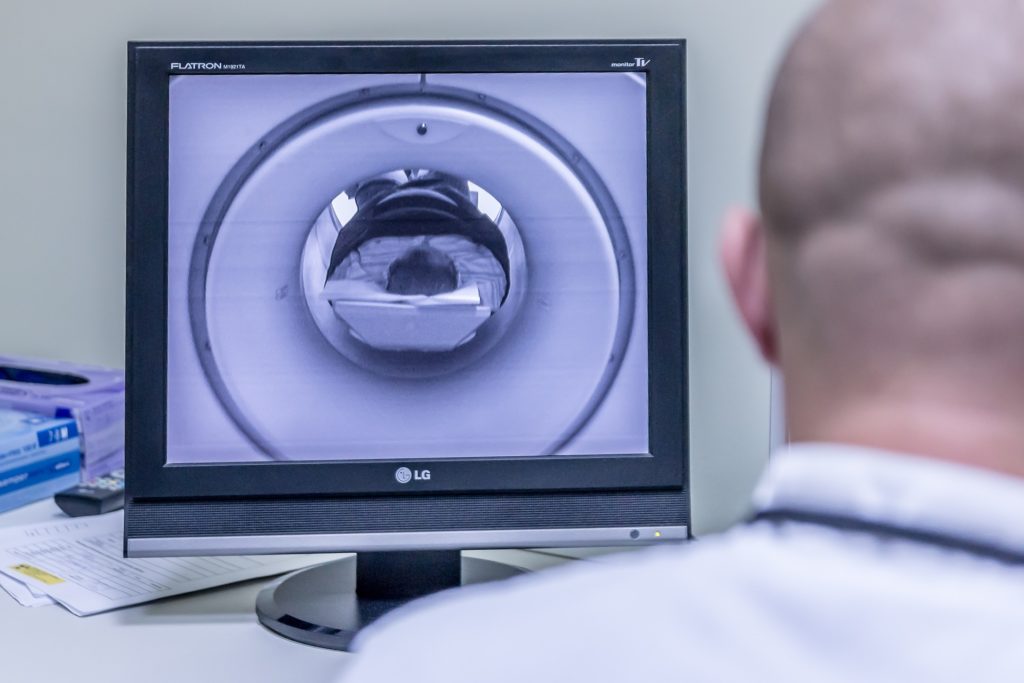
Stereotactic radiation is an effective, long-term treatment for trigeminal neuralgia: a painful condition that occurs with increased frequency in patients with multiple sclerosis (MS). Radiation is noninvasive and has less negative side effects than other treatments, according to the longest follow-up in a study of its kind presented October 31, 2010, at the 52nd Annual Meeting of the American Society for Radiation Oncology (ASTRO).
Multiple sclerosis is a progressive neurological disease affecting about 300,000 Americans where the body’s immune system attacks its own nerve cells, affecting the ability of the brain to communicate with the spinal cord. Trigeminal neuralgia is an intensely painful condition caused by dysfunction of the trigeminal nerve, which is one of the nerves that innervates the face. People living with MS see a significantly increased incidence of this problem.
“We studied patients for a median of five years after treatment, which is the longest period of follow-up ever completed,” Tejan Diwanji, lead author of the study at the University of Maryland, School of Medicine in Baltimore, said “Our study shows that radiosurgery using Gamma Knife is a proven alternative to surgery or anti-epileptic drugs.”
The study was designed to determine the long-term effectiveness of treating trigeminal neuralgia in MS patients with Gamma Knife radiosurgery.
Stereotactic radiation is a specialized type of external beam radiation therapy that uses focused radiation beams to target a well-defined area. It is most often used for tumors of the brain, but in this case, doctors targeted a nerve root, relying on detailed imaging and computerized three-dimensional planning to deliver the radiation dose with extreme accuracy while sparing the surrounding tissue to reduce side effects.
Stereotactic radiation therapy, sometimes called radiosurgery, refers to a single or several treatments to the brain. Doctors in this study used GammaKnife. Other brand names for stereotactic radiation include Axesse, CyberKnife, Novalis, Primatom, Synergy, X-Knife, TomoTherapy or Trilogy.
The study involved 13 MS patients with trigeminal neuralgia who were treated with radiosurgery at the University of Maryland between 1998 and 2001 and were followed for a median of five years after treatment.
“We need more long-term studies to confirm the positive and lasting outcomes of radiosurgery, then it could become the treatment of choice for MS patients afflicted with trigeminal neuralgia,” Diwanji, said. “I encourage people with MS suffering from trigeminal neuralgia to talk to their doctor about consulting a radiation oncologist to see if they would be good candidates for radiosurgery.”